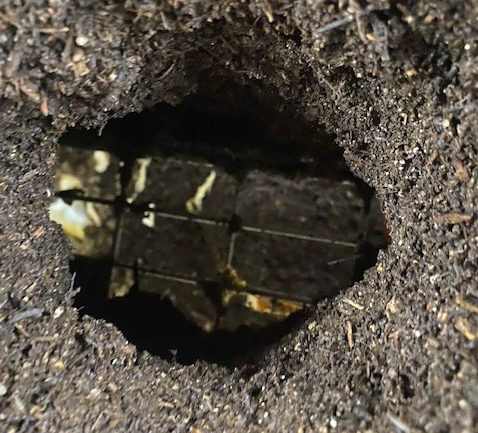But if conditions are not right, some CFT’s will develop a pattern of ‘cave-ins’ until conditions are corrected. The cause of these cave-ins is the subject of hot debate, but is generally attributed to inconsistent tilth or cohesiveness of the material. This is usually caused by inconsistent moisture levels from top to bottom, or at various locations in the bin.
Agriculture and construction industries experience similar conditions in hoppers, but for different reasons, and use the terms ‘bridging’ and ‘rat-holing’ as opposed to cave-ins. CFT operators have borrowed the same terms but the causes and remedies are different. This is due to two main reasons: the bin has a flat bottom, not slanted like a hopper, and the material is moist, not dry like grain or gravel.
Most often, the feedstock in the bin is too wet at the top and too dry at the bottom. The bottom material harvests but the material above it does not settle to the grating to fill in behind it. A cavity forms above the grating. The air space aggravates the situation, and more material dries and the the cave enlarges.
 These pockets or cavities can be seen from underneath, but not from the top where everything looks level and fine. Then at some point, the arch on top the cavity caves in, and suddenly you see a hole straight through from top to bottom, where everything looked fine the day before.
These pockets or cavities can be seen from underneath, but not from the top where everything looks level and fine. Then at some point, the arch on top the cavity caves in, and suddenly you see a hole straight through from top to bottom, where everything looked fine the day before.
You can prove this for yourself by pressing down on the top surface and feeling for weak or spongy spots. If there is a cave forming beneath, and you put more pressure on its arch, it will collapse into the cavity beneath and you will see the resulting ‘sink-hole’.
The moral of the story is to control your process with routine food and moisture additions, and regular harvesting, to maintain a uniform texture and moisture content throughout.

